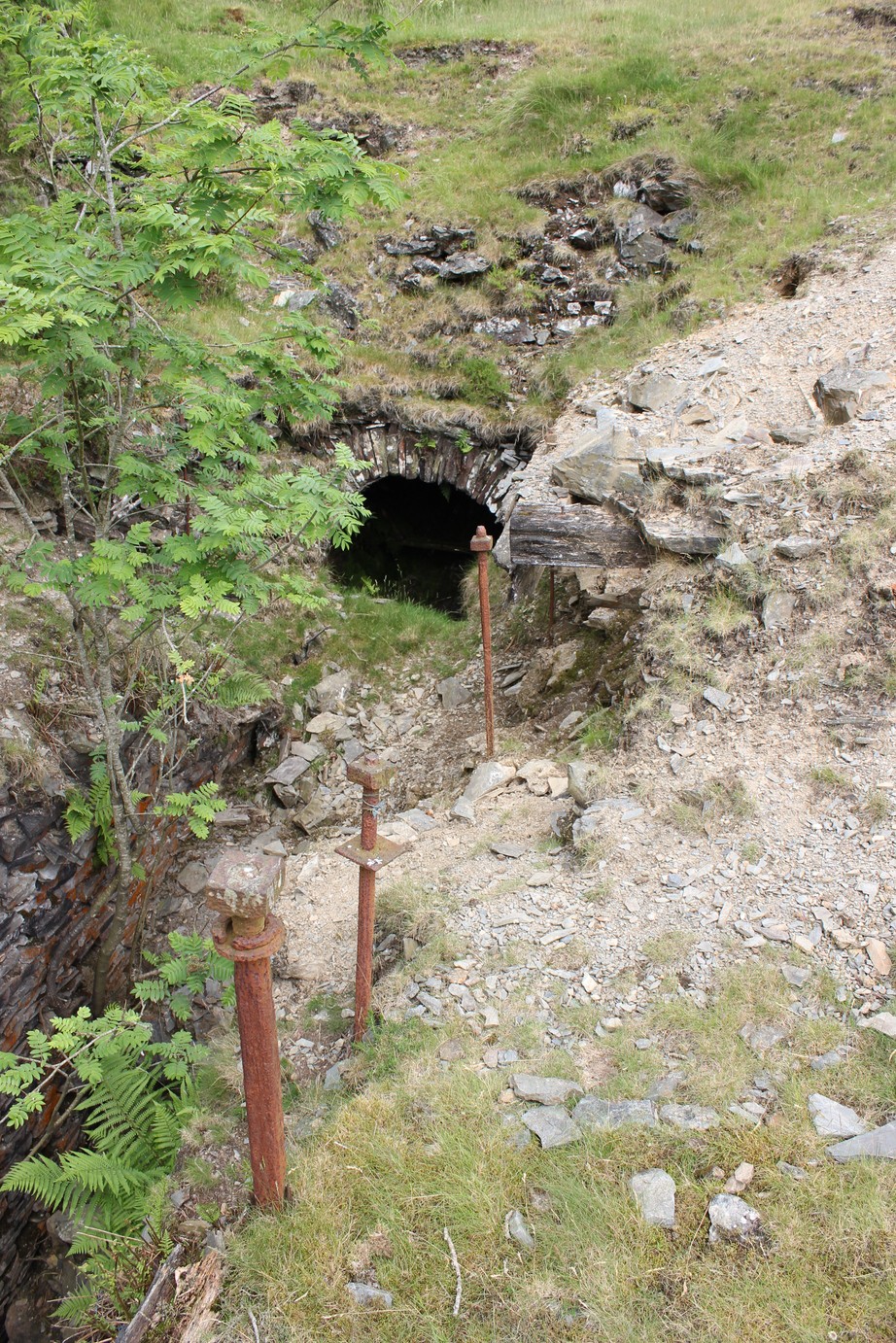Three wheelpits for pumping, winding and crushing survive.
Ore recorded by Lewis Morris, but no work until a century later when brothers called Evans raised several hundred tons of ore from a shallow adit.
| Year | Activity |
|---|---|
| c1850 | Acquired by John Taylor & Sons who build a leat to reservoirs the north. At the entrance to the intermediate adit, dressing floors were built. Much longer deep adit later driven from east of the road at Cwmbrwyno Bridge. Mine becomes very productive. |
| 1866 | Relinquished by Taylors by which time Taylor’s Shaft was 92 fm deep, with the ore body above largely exhausted. |
| 1877 | Cwm Brwyno Mining Company formed with £15,000 capital, with J.H. Murchinson as secretary, Capt. James Paull of Goginan as manager. Work on a north lode via the deep adit proved disappointing and work ceased. |
| 1879 | Cwm Brwyno Lead Mining Company comes into possession with £30,000 capital. Propectus enticed investors with _‘the directors have much pleasure in stating that the mine is rapidly improving on value’_together with an optimistic report by Absalom Francis. The machinery though was worn out, but enough capital was secured to do some work. |
| 1888 | Last returns of ore. |
Publications (15)
- (1922); BGS - Mineral Resources of GB (c1920s) Vol XX - Lead and Zinc: Cardiganshire & West Montogmeryshire; 242 pages
- (1998); WMS Newsletter Issue 39 Dec; 8 pages
- (2000); WMS Newsletter Issue 42 Apr; 8 pages
- (2002); WMS Newsletter Issue 47 Oct; 28 pages
- (2003); WMS Newsletter Issue 49 Winter; 32 pages
- (2004); WMS Newsletter Issue 50 Spring; 40 pages
- Bick, D.E. (1991); Old Metal Mines of Mid-Wales, The; South of Goginan - Part 2; 18-21
- Fellows, Roy; Cwmbrwyno Explorer; 2 pages
- Foster-Smith, J.R.; NMRS (1979); British Mining 12 - Mines of Cardiganshire, The; ISBN 0 901450 14 6; pp.11,52-54.
- Hughes, S.J.S.; NMRS (1990); British Mining 40 - Darren Mines, The; ISBN 0901450 36 7; pp.59,82,115,120,134.
- Hughes, Simon J.S. (1990); UK Journal of Mines & Minerals No 8, Autumn - Llywernog Mine and Museum, Dyfed, Wales; 8 pages
- Jones, Nigel and Walters, Mark and Frost, Pat (2004); Mountains and Orefields; 208 pages
- Murchison, J.H. (1869); Lead Mines as an Investment; 34 pages
- NMRS; British Mining 41 - Memoirs 1990; pp.64-67.
- NMRS; British Mining 43 - Memoirs 1991; pp.97,106.





